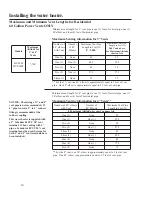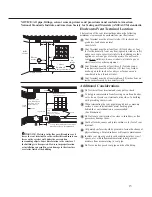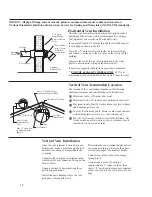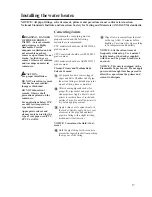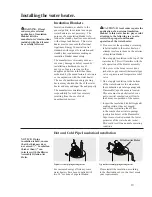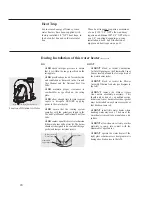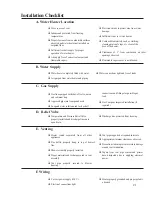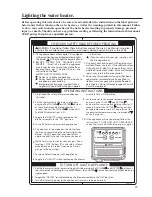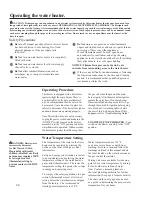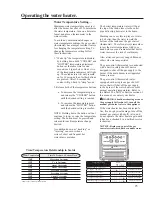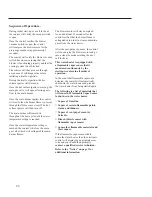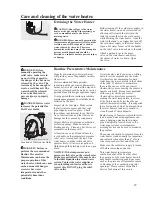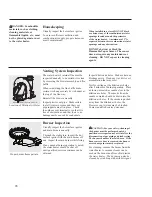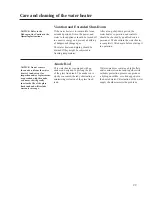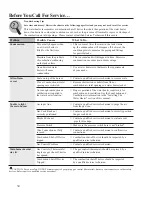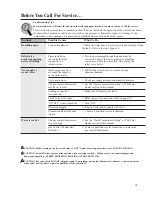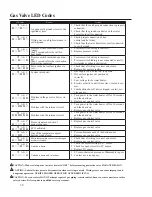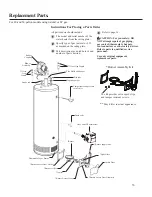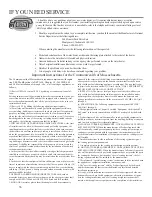
28
Housekeeping
Visually inspect the hot surface ignitor.
To ensure sufficient ventilation and
combustion air supply, proper clearances
must be maintained.
When installed in a closet, DO NOT block
or obstruct any of the combustion air inlet
openings located around the perimeter
of the water heater. A minimum of 1” is
required between these combustion air inlet
openings and any obstruction.
DO NOT obstruct or block the
Flammable Vapor Sensor. The sensor
does not require any maintenance or
cleaning. DO NOT expose to cleaning
agents.
!
DANGER: Combustible
materials, such as clothing,
cleaning materials, or
flammable liquids, etc., must
not be placed against or next
to the water heater.
Burner Inspection
Visually inspect the hot surface ignitor
and main burners annually.
Through the sight glass, inspect the hot
surface ignitor with the main burner off
and inspect the main burner while firing.
If any unusual burner operation is noted,
the water heater should be shut off
until qualified service assistance can be
obtained.
!
CAUTION: For your safety, cleaning of
the burner must be performed only by
qualified service personnel, as it involves the
disconnection of gas piping and leak testing.
The burner chamber is a sealed area. If the
burner access door is removed, the burner
access door gasket must be replaced.
For cleaning, remove the burner from the
water heater. A vacuum cleaner can be
used on the burner and floor shield inside
the water heater. The burner can also be
cleaned by scrubbing with mild detergent.
Proper burner flame pattern
Venting System Inspection
The water heater’s internal flue must be
inspected annually to be certain it is clean
by removing the blower assembly and flue
baffle.
When reinstalling the flue baffle make
certain it is hung securely by its hanger at
the top of the flue way.
Reinstall the blower assembly.
Inspect plastic vent pipe. Make certain
that all joints are secure and that vent
pipe supports are all in place. Check
the outdoor vent terminal to see that it is
free of obstructions, and that there is no
damage nearby caused by condensate.
Inspect dilution air holes. Make certain no
blockage exists. Clean any lint, dirt or oil
accumulation that may exist.
Test for spillage at the dilution air holes
after 5 minutes of burner operation. Place
a blown out match or candle close to the
dilution are holes. The smoke from the
candle or match should be drawn into the
dilution air holes. If the smoke is pushed
away from the dilution air holes, the
blower or vent system may be blocked.
Contact qualified service personnel.
Blower Assembly Dilution Air Holes
Location of Dilution Air Holes
Summary of Contents for PowerVent AP14236
Page 34: ...34 Notes...
Page 35: ...35 Notes...

